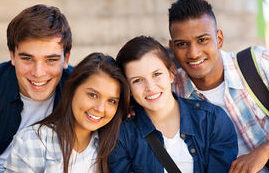Growth Mindset: The Power of Yet
 Growth Mindset: The Power of Yet
Growth Mindset: The Power of Yet
When my daughter was a toddler, one of her favorite videos to watch on repeat was The Power of Yet. This Sesame Street song was upbeat and fun for her to dance to, but the message was great as well. The singer was shown with a variety of muppets as they tried or practiced new skills; the message was that things may be difficult at first, but that just means we have not mastered them YET! This is the idea behind having a a growth mindset, a very important skill or approach to life that we must teach our kids. Without this mindset, they are likely to grow into teens and kids who cannot handle difficult situations or failure.
How to Help Our Kids Learn New Skills
Developing new skills takes time and kids need support to manage their emotions while they tackle new activities. As parents, we want to be sure our kids can be successful, but we have to be aware that too much intervention will keep our kids from developing appropriately. If our babies get frustrated with learning to use a spoon and we feed them to avoid the crying, we are robbing them of the time to learn that fine motor skill. When they are learning to tie their shoes, they will get frustrated at those darn bunny ears, but if we don’t encourage them to keep trying, they will be 30 years old and still wearing Crocs and velcro shoes. While these situations may seem silly, these are the early times when we are teaching a growth mindset. As kids get older, the situations get more serious: learning to advocate for themselves, learning to solve problems on their own, learning to speak out against unethical or immoral acts. As kids grow, we have to allow them to struggle as they learn new skills so they learn that failure leads to learning and success, not that failure leads to someone stepping in to do it for them.
Teaching Our Kids Critical Thinking Skills and Grit
So what can you do to help your child develop that growth mindset? Here are some very tangible suggestions for how to push your child to develop the skills, critical thinking, and grit needed when things get tough:
- Talk to your child openly about this concept. When they ask for help, remind them that we learn by trying and practicing, not when others do things for us. We need to explain that we will help by giving advice and through encouragement, but many things they will need to learn and do on their own.
- Remind them of the Power of Yet! We won’t be great at everything the first time we try it, but the more we try and the more we practice, the better we will get. When they say they can’t do something, remind them that they just can’t do it YET, but that they will get better and better over time.
- When they are a bit older, include them in household problem-solving. When you need to create a grocery list, do a simple repair, or work out a budget, include them in the conversation. This will model that everyone has challenges and that they can work with you to solve problems as they arise.
- Model learning a new skill! Whether you want to learn to play the guitar, invest, cook, or do some artistic landscaping, it’s good for your kids to see you struggling with new skills as well! You can talk about your wins and frustrations as part of the learning process and model a growth mindset for them.
- Work with your child to set goals. Having goals and working towards them fosters motivation and engagement. These can be goals for home or school, but having goals helps push us forward.
Model Growth Mindset
Parenting isn’t easy, and none of us wants to see our kids struggle. But remember that it’s your job to help them learn how to problem solve and to learn new skills, not to solve problems or do things for them! Teach and model that growth mindset and take advantage of those teachable moments.
 Teaching our Kids Character Habits That Last a Lifetime (Part 2)
Teaching our Kids Character Habits That Last a Lifetime (Part 2) Teaching Our Kids Character Habits That Last a Lifetime (Part 1)
Teaching Our Kids Character Habits That Last a Lifetime (Part 1) Teaching Our Children Executive Functioning Skills
Teaching Our Children Executive Functioning Skills How to Help Struggling Students Learn
How to Help Struggling Students Learn